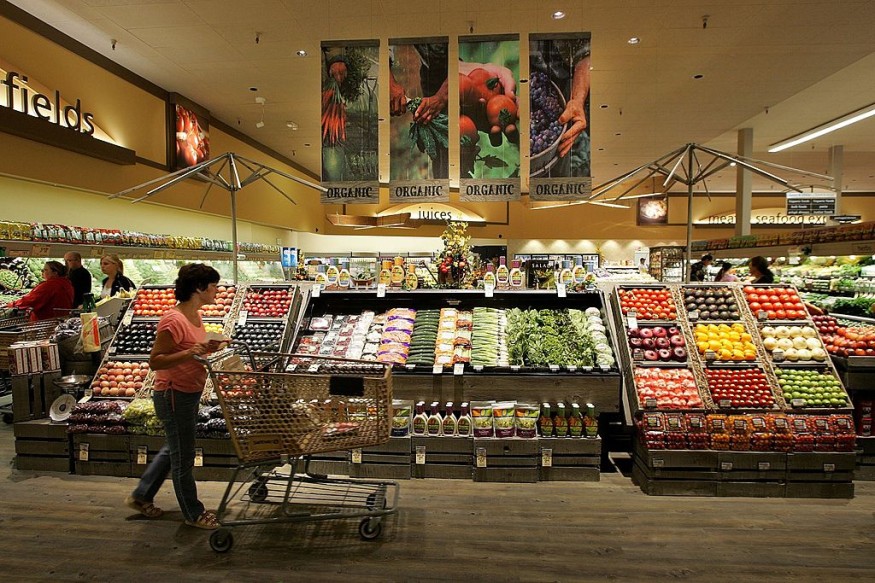China has produced a new ice cream that nobody wants to eat. Three samples from a Northern China ice cream manufacturer tested positive for COVID-19 during regular government tests recently.
According to the Associated Press, a city government statement said the Daqiaodao Food Co in Tianjin was closed near Beijing. More than 1,600 of its workers were being screened for the coronavirus.

The government said much of the 29,000 cartons in the batch already had to be sold. It claimed that 390 sales were being monitored in Tianjin, and sales to their areas were informed by authorities elsewhere.
New Zealand milk powder and whey powder from Ukraine were included in the ingredients, the government said.
Experts still suspect, though, that 4,836 ice cream boxes might have been tainted. More than half of them were already released for sale when the tests came back, announced Sky News on Friday.
It was only necessary to confiscate 2,089 boxes of ice cream in time, the study said.
Fonterra and Synlait have also said that the Chinese are not accusing their milk, but rather the powder from Ukraine.
The Chinese government indicated that the outbreak, first identified in late 2019 in Wuhan, came from abroad and illustrated what it claims that coronavirus findings on imported fish and other foods.
Foreign physicists, though, are skeptical.
COVID-19 is a respiratory disorder that travels from person to person, according to Food Standards Australia New Zealand, an independent statutory body." It's not a foodborne disease."
One-off Case
It could be a one-off occurrence; a virologist advised the news outlet. Dr. Stephen Griffin, a virologist at Leeds University in the UK, said that the batches were most likely tainted by an infected human.
While any degree of contamination is not appropriate and is still a cause for alarm, Griffin said the possibility is that this is the consequence of a manufacturing plant crisis and likely down to factory hygiene.
He clarified that the cold temperature at which ice cream was kept, and the fact that it contains fat, may clarify why the samples were taken the virus had persisted - but indicated that the news did not cause a big warning.
He also advised the people not to worry about the incident. Griffin continued that not everyone has to worry that unexpectedly any piece of ice cream will be tainted with coronavirus.
Officials said anyone who may have bought the ice cream could record their status. Future instances may be monitored by the health department.
The World Health Organisation, allaying concerns, said in August that people do not fear food, food packaging, or food distribution.
In Wuhan, where the first case was registered, a WHO team is attempting to track the highly contagious virus sources.
Tips for Shopping Safely Amid COVID-19 Pandemic

With COVID-19 moving through countries worldwide with relentless speed, groceries and stores are severely affected.
The Centers for Disease Control and Prevention has released recommendations for safe shopping. Where practical, the department suggests online shopping. But below are a few more tips from the CDC:
General
- Wear a mask in public environments and when among those who do not live in your home, particularly when it is difficult to socially separate oneself.
- If you have to visit the store personally, go for hours where there would be fewer visitors (for example, early morning or late night).
- When you are at increased risk of medical disease, find out if the shop has limited hours for higher-risk persons. Start shopping around those hours if they do.
- If you usually carry your reusable bags, before each usage, ensure that they are washed. During the COVID-19 pandemic, several places briefly prohibited the usage of reusable shopping bags, so review your national, local, supermarket, or market policy before transporting reusable bags.
- Sterilize the shopping cart, if available, using disinfecting wipes.
- For unwashed palms, you should not cross your eyes, nose, or lips.
- When shopping and in queues, keep at least six steps away from everyone.
- Using designated points of entrance or exit and observe any directional signage or floor markers meant to hold pedestrians at least six feet apart.
- Touch only goods that, if necessary, you plan to buy.
- Try avoiding eating any demos or purchasing food or drinks goods from self-service stations.
- If necessary, using contactless payment (meaning you pay without touching paper bills or coins, a card, or a keypad). Use hand sanitizer or alcohol right after payment if you need to handle currency, a passport, or use a keypad.
Proper hand hygiene
- Using a hand sanitizer includes at least 60% alcohol before entering and after leaving the drug store or shop.
- Clean your hands thoroughly with soap and warm water for a minimum of 20 seconds until you get back, and before cooking or consuming meals.
Safely unpacking at home
- The chance of contamination with SARS-CoV-2, the virus that triggers COVID-19, is generally known to be minimal in agricultural items, food packaging, or bags. It is still necessary, however, to adopt good practices for food protection.
- Refrigerate or freeze beef, fish, eggs, fish, and other perishables within two hours of the delivery before unpacking groceries.
- Do not use on food wrapped in cardboard or plastic wraps, disinfectants meant for rough surfaces, such as bleach or ammonia.
- Clean your hands with soap and water for at least 20 seconds after unpacking the grocery. Using a hand sanitizer that includes at least 60 percent alcohol if soap and water are not available.
- Using a readily available disinfectant liquid or a DIY disinfecting solution, wipe and disinfect kitchen counters regularly.
Check out more news and information on COVID-19 on Science Times.
© 2025 ScienceTimes.com All rights reserved. Do not reproduce without permission. The window to the world of Science Times.












